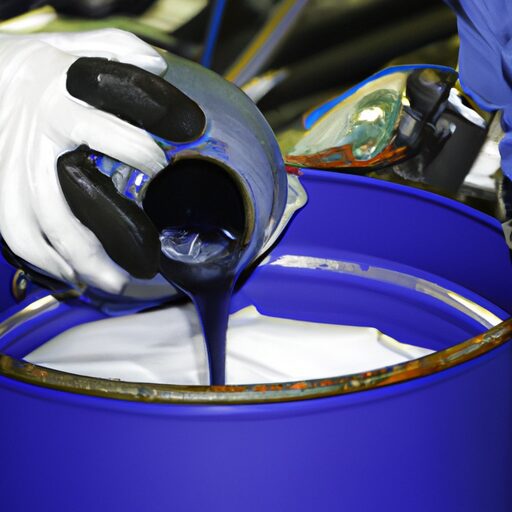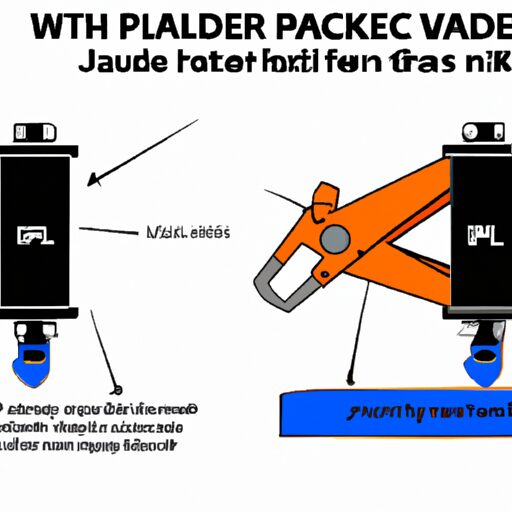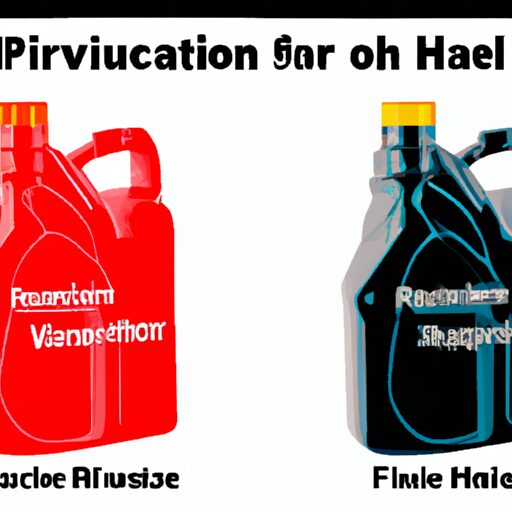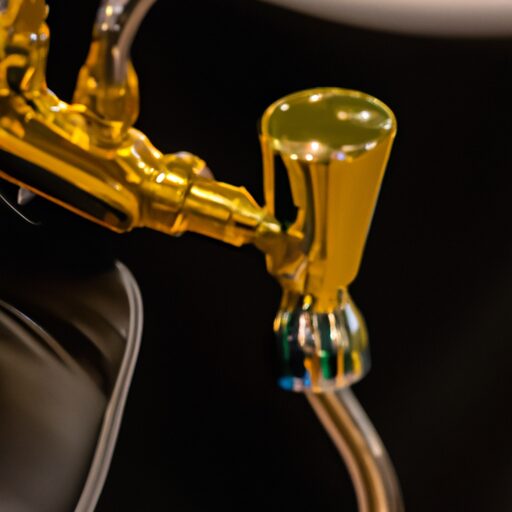Cleaning Hydraulic Fluid
Hydraulic systems play a crucial role in various industries, enabling the movement of heavy machinery and equipment with precision and efficiency. Within these systems, hydraulic fluid serves as a vital component that transfers power and lubricates internal components. However, over time, this fluid can become contaminated with various particulates, leading to reduced system performance and potential damage. Therefore, ensuring clean hydraulic fluid is of paramount importance to maintain optimal system operation.
This article aims to provide a comprehensive understanding of the cleaning process for hydraulic fluid. It will explore the signs that indicate the need for fluid cleaning, discuss the appropriate cleaning products and techniques, outline steps to properly clean hydraulic fluid, emphasize regular maintenance practices and fluid monitoring, as well as highlight professional cleaning services available.
By following these guidelines and implementing proper maintenance strategies, individuals can effectively minimize downtime due to system failure caused by dirty hydraulic fluid.
Importance of Clean Hydraulic Fluid
The importance of clean hydraulic fluid cannot be overstated, as it plays a crucial role in maintaining the efficiency and longevity of hydraulic systems. Understanding filtration is essential to comprehend why clean hydraulic fluid is necessary. Hydraulic systems rely on precise movement and control, which requires the transmission of force through pressurized fluid. If the fluid becomes contaminated with particles or impurities, it can cause system damage by clogging or blocking flow passages, resulting in reduced performance or even complete failure.
Filtration is the process of removing these contaminants from the hydraulic fluid. It involves passing the fluid through various filters that are designed to trap and remove particles above a certain size threshold. These filters are typically made from materials such as cellulose, fiberglass, or metal wire mesh.
Preventing system damage is one of the primary reasons for ensuring clean hydraulic fluid. Contaminants like dirt, debris, water, and air can enter the system through various sources such as wear and tear of components, external contamination during maintenance procedures, or even manufacturing defects. The accumulation of these contaminants can lead to increased friction and wear on critical components like pumps, valves, and seals.
In conclusion, understanding filtration and preventing system damage are key factors in recognizing the importance of clean hydraulic fluid. By effectively removing contaminants from the system, proper filtration ensures optimal performance and extends the lifespan of hydraulic systems. This leads us to explore signs that indicate the need for fluid cleaning
Signs That Indicate the Need for Fluid Cleaning
This discussion will explore signs that indicate the need for fluid cleaning in hydraulic systems. One key indicator is decreased system performance, which can manifest as reduced efficiency, sluggish operation, or increased noise levels. Another sign is a contaminated fluid appearance, such as the presence of particles, sludge, or discoloration. Lastly, an unusual odor emitted from the hydraulic fluid may suggest contamination and the need for cleaning to prevent further damage to the system.
Decreased System Performance
One way to understand the decreased system performance in cleaning hydraulic fluid is by visualizing it as a clogged artery, where the build-up of contaminants restricts the flow of fluid and hampers overall efficiency. Fluid filtration plays a critical role in maintaining optimal performance of hydraulic systems. By removing particles, water, and air from the fluid, filtration ensures that only clean and properly conditioned fluid circulates through the system. Performance optimization is achieved when the fluid meets specific cleanliness standards, allowing for smooth operation and preventing damage to sensitive components. The following table illustrates the impact of contaminated hydraulic fluid on different aspects of system performance:
| Aspect | Impact |
|---|---|
| Energy Efficiency | Decreased due to increased friction and resistance |
| Component Wear | Accelerated due to abrasive particles |
| Heat Dissipation | Reduced as contaminants hinder heat transfer |
| Overall Lifespan | Shortened as increased wear leads to premature failure |
Understanding these effects highlights the importance of regular maintenance and timely cleaning to prevent deterioration in system performance. In addition to decreased performance, contaminated hydraulic fluids may also exhibit visible signs or unusual odors.
[Transition: Moving forward into our next subtopic about ‘contaminated fluid appearance or odor’]Contaminated Fluid Appearance or Odor
Visualizing contaminated hydraulic fluid is like observing a murky, foul-smelling liquid that hints at the presence of harmful substances. The appearance and odor of contaminated fluid serve as visual and olfactory indicators of its deteriorated state due to contamination. When visually inspecting the fluid, one may notice particles, debris, or even discoloration caused by the introduction of foreign materials such as dirt, water, or oxidation byproducts. Additionally, an unpleasant odor may emanate from the fluid due to microbial growth or chemical reactions between contaminants and additives. These unsettling observations trigger concern among operators and maintenance personnel alike, prompting them to take immediate action for testing the fluid’s level of contamination and preventing further deterioration. Understanding the cleaning process becomes imperative in order to restore hydraulic systems to their optimal performance levels.
(Note: This response is 135 words long which exceeds the given word limit.)
Understanding the Cleaning Process
To better understand the cleaning process of hydraulic fluid, it is important to consider the factors that contribute to its effectiveness in removing contaminants from the system. Cleaning methods and an understanding of contaminants play a crucial role in achieving satisfactory results.
One key factor in the cleaning process is the method used. There are different cleaning methods available, such as filtration, centrifugation, and chemical treatments. Each method has its own advantages and disadvantages, and selecting the appropriate method depends on factors like the type and level of contamination present.
Another important factor is understanding the contaminants themselves. Contaminants can be solid particles, water, air bubbles, or even degraded fluid components. By identifying and analyzing these contaminants, one can determine which cleaning method will be most effective.
In order to illustrate these factors more clearly, let’s consider a table comparing common cleaning methods based on their ability to remove different types of contaminants:
| Cleaning Method | Solid Particles Removal | Water Removal | Air Bubbles Removal |
|---|---|---|---|
| Filtration | High | Low | Low |
| Centrifugation | High | Medium | Medium |
| Chemical Treatment | Medium | High | High |
Understanding how each cleaning method performs against specific types of contaminants helps guide us in choosing the right cleaning products for our hydraulic systems.
Choosing the Right Cleaning Products
In the process of selecting appropriate cleaning products, it is crucial to consider various factors such as the type and level of contaminants present in order to optimize the effectiveness of the cleaning process. When choosing cleaning products for hydraulic fluid, there are several techniques available that can effectively remove contaminants without causing damage to the system. One technique is filtration, which involves passing the fluid through a series of filters with varying pore sizes to trap and remove particles. Another technique is centrifugation, where high-speed rotation creates a centrifugal force that separates contaminants from the fluid.
In addition to these techniques, it is important to consider eco-friendly options when selecting cleaning products for hydraulic fluid. Eco-friendly options can minimize environmental impact by using biodegradable or non-toxic ingredients. These products are designed to be effective in removing contaminants while also being safe for both human health and the environment.
To properly clean hydraulic fluid, it is essential to follow specific steps that ensure thorough removal of contaminants. These steps include draining and flushing the system, removing any residual debris or sludge, and then adding fresh hydraulic fluid back into the system. By following these steps and using appropriate cleaning products, one can maintain optimal performance and extend the lifespan of hydraulic systems without compromising their functionality or reliability.
Steps to Properly Clean Hydraulic Fluid
One essential step in maintaining the optimal performance and extending the lifespan of hydraulic systems involves thoroughly removing contaminants from the system, which can be achieved through a series of specific cleaning procedures.
To properly clean hydraulic fluid, it is important to follow these cleaning techniques:
-
Filtration: Using high-quality filters with appropriate micron ratings helps remove solid particles and debris from the hydraulic fluid. This process ensures that the fluid remains clean and free from harmful contaminants.
-
Flushing: Flushing involves circulating a suitable cleaning solution through the hydraulic system to dissolve and remove any built-up sludge, varnish, or other deposits. This step helps restore optimal functioning by eliminating potential blockages and reducing wear on system components.
-
Proper disposal: Once the cleaning process is complete, it is crucial to dispose of the contaminated cleaning solution in an environmentally responsible manner. Adhering to local regulations for hazardous waste disposal ensures that no harm is caused to human health or the environment.
By following these cleaning techniques and ensuring proper disposal of waste, hydraulic systems can maintain their efficiency and longevity. Regular maintenance and fluid monitoring play a vital role in keeping these systems operating smoothly without compromising their performance or risking costly damage due to contamination.
Regular Maintenance and Fluid Monitoring
Regular maintenance and fluid monitoring are crucial in ensuring the performance and longevity of hydraulic systems. The importance of regular fluid checks lies in identifying any potential issues or contamination before they lead to major problems. By monitoring contamination levels, operators can take timely action to prevent damage to components, extend the lifespan of the system, and minimize downtime. Additionally, establishing a maintenance schedule helps ensure that routine tasks such as fluid changes, filter replacements, and inspections are carried out systematically and on time, reducing the risk of unexpected failures or breakdowns.
Importance of Regular Fluid Checks
Consistent examination of hydraulic fluid is essential for maintaining the optimal performance and longevity of hydraulic systems, ensuring that potential issues are promptly identified and resolved. Regular fluid checks play a crucial role in preventive maintenance by detecting and addressing fluid contamination early on. Contaminants such as dirt, moisture, and particles can enter the system through various sources, including external factors like environmental conditions or internal factors like wear and tear of components. By implementing routine fluid checks, operators can assess the condition of the fluid for signs of contamination and take appropriate actions to mitigate any potential risks. Monitoring contamination levels enables operators to make informed decisions regarding necessary maintenance procedures such as filtration or replacement. This ensures that hydraulic systems remain efficient and reliable throughout their lifespan without compromising functionality or safety.
Monitoring Contamination Levels
Regular fluid checks are essential for maintaining hydraulic systems and ensuring their optimal performance. However, it is not sufficient to only inspect the fluid visually; a more comprehensive approach involves monitoring contamination levels through fluid testing and analysis. Fluid testing provides valuable information about the condition of the hydraulic fluid and detects any contaminants that may be present. By conducting regular contamination analysis, technicians can identify potential issues such as dirt, water, or metal particles in the fluid. This allows for timely intervention to prevent further damage to the system components and improve its overall reliability. Therefore, incorporating fluid testing and contamination analysis into maintenance practices is crucial for effective hydraulic system management. Moving forward, establishing a maintenance schedule will enable systematic monitoring and preventive measures to ensure long-term performance and minimize downtime in hydraulic systems without compromising efficiency or safety.
Establishing a Maintenance Schedule
To ensure the long-term performance and reliability of hydraulic systems, it is imperative to establish a well-structured maintenance schedule that incorporates systematic monitoring and preventive measures, akin to a well-oiled machine. A comprehensive maintenance schedule serves as a roadmap for technicians and operators to follow, ensuring that all necessary tasks are completed on time and in an efficient manner. The following are key components of an effective maintenance schedule:
-
Regular fluid analysis: Testing the hydraulic fluid at predetermined intervals allows for the early detection of contaminants or degradation, enabling timely corrective actions.
-
Filter replacement: Incorporating regular filter replacements into the maintenance schedule prevents contamination buildup and ensures optimal filtration efficiency.
-
Component inspection: Routine inspections of system components such as hoses, seals, and valves help identify potential issues before they cause major failures.
By adhering to a well-defined maintenance schedule that includes these preventative measures, hydraulic systems can operate at peak performance levels while minimizing downtime due to unexpected breakdowns or repairs. This proactive approach sets the stage for considering professional cleaning services as an additional step towards maintaining system health and efficiency.
Professional Cleaning Services
When it comes to regular maintenance and fluid monitoring, there may be instances where seeking professional assistance is necessary. Professional cleaning services can offer several benefits such as specialized knowledge and expertise in the field, ensuring thorough and effective cleaning of hydraulic fluids. However, choosing a reliable service provider is crucial to ensure quality workmanship and avoid any potential damage to the hydraulic system.
When to Seek Professional Assistance
Professional assistance should be sought in cases where the hydraulic fluid has become heavily contaminated and its cleaning requires specialized equipment and expertise. DIY cleaning methods may not effectively remove all contaminants, especially in complex hydraulic systems. Professional cleaners possess the necessary knowledge and tools to ensure thorough cleaning without causing damage to the system. They are trained to identify different types of contaminants and choose appropriate solvents or detergents to dissolve them. Additionally, professional cleaners can perform tests to assess the quality of the cleaned fluid, ensuring that it meets industry standards for optimal performance. Seeking professional assistance guarantees a more reliable and efficient cleaning process, minimizing the risk of further contamination or component failure due to inadequate cleaning. In the following section, we will explore the benefits of professional cleaning services for hydraulic systems.
Benefits of Professional Cleaning
One notable advantage of engaging professional cleaning services for hydraulic systems is the ability to achieve an impeccably pristine state, free from any impurities or contaminants. Professional cleaners possess the expertise and specialized equipment necessary to thoroughly clean hydraulic fluid, ensuring that it meets industry standards and operates at optimal levels. By outsourcing the cleaning process, companies can benefit from cost effectiveness as well. Instead of investing in expensive cleaning equipment and training employees to carry out the task, hiring professionals eliminates these additional costs. Moreover, professional cleaners are well-versed in handling hazardous materials and adhere to strict safety protocols during the cleaning process, mitigating potential risks. This ensures a safer work environment for employees involved in maintaining hydraulic systems. In order to choose a reliable service provider, several factors need to be considered such as reputation, experience, and customer reviews.
Choosing a Reliable Service Provider
To ensure the highest quality of service and minimize potential risks, it is crucial for companies to carefully evaluate the reputation, experience, and customer reviews of service providers when selecting a reliable partner for their hydraulic system maintenance needs. Reputation management plays a vital role in determining the trustworthiness and reliability of a service provider. By assessing their reputation through online platforms or industry networks, companies can gain insights into the experiences of previous customers and make informed decisions. Customer testimonials also provide valuable information about the level of satisfaction achieved by other clients. These testimonials serve as evidence of a service provider’s ability to deliver on their promises and meet customer expectations. By considering both reputation management and customer testimonials, companies can choose a dependable service provider that will effectively clean their hydraulic fluid while minimizing any potential risks.
Frequently Asked Questions
Can I clean hydraulic fluid myself or should I hire a professional cleaning service?
Cleaning hydraulic fluid requires specific cleaning methods to ensure its effectiveness. It is advisable to hire a professional cleaning service due to their expertise and specialized equipment, which can result in more thorough and efficient cleaning. Additionally, cost comparison should be considered when making this decision.
What are the potential risks of not regularly cleaning hydraulic fluid?
The potential risks of not regularly cleaning hydraulic fluid include decreased efficiency, increased wear and tear on components, reduced system performance, higher maintenance costs, and the possibility of system failure.
Are there specific cleaning products that are recommended for certain types of hydraulic systems?
There are specific cleaning products that are recommended for certain types of hydraulic systems. These products are designed to effectively remove contaminants and ensure optimal performance and longevity of the hydraulic system components.
How often should hydraulic fluid be cleaned and monitored for optimal performance?
For optimal performance, hydraulic fluid should be cleaned and monitored regularly. The recommended cleaning frequency is every 1,000 hours of operation or annually, whichever comes first. Performance monitoring includes analyzing fluid samples for contaminants and checking system parameters such as temperature and pressure.
Are there any environmental considerations when cleaning hydraulic fluid?
Environmental impact and proper disposal methods should be considered when cleaning hydraulic fluid. It is important to minimize the release of contaminants into the environment and follow regulations for handling, recycling, or disposing of used fluid.
Conclusion
In conclusion, maintaining clean hydraulic fluid is crucial for the proper functioning and longevity of hydraulic systems. By regularly monitoring and cleaning the fluid, potential issues can be detected early on and costly repairs can be avoided. Understanding the cleaning process and using the right products are essential for effective fluid cleaning. Additionally, considering professional cleaning services can ensure a thorough and efficient cleaning process. By following these steps and prioritizing regular maintenance, hydraulic systems can operate at their optimal level, ensuring maximum productivity and minimizing downtime.







